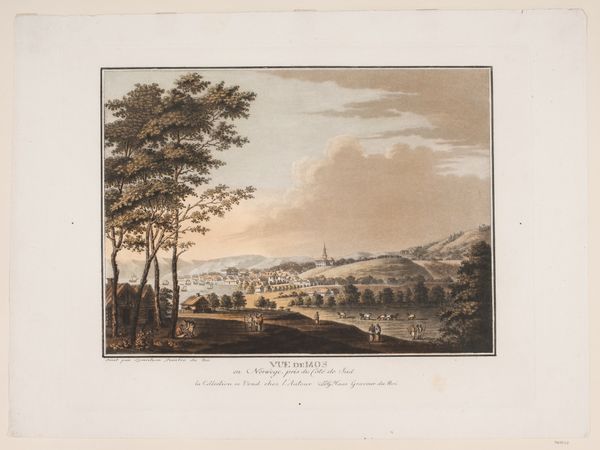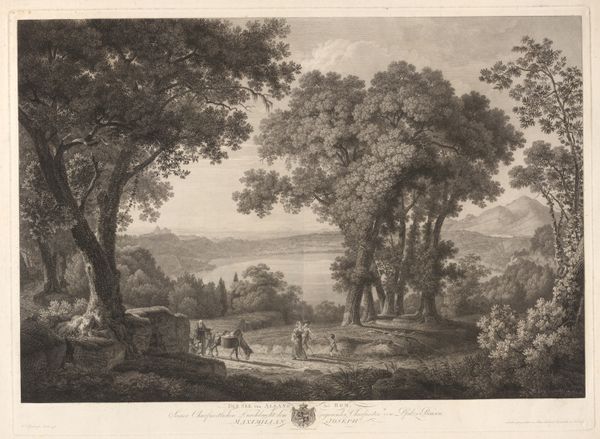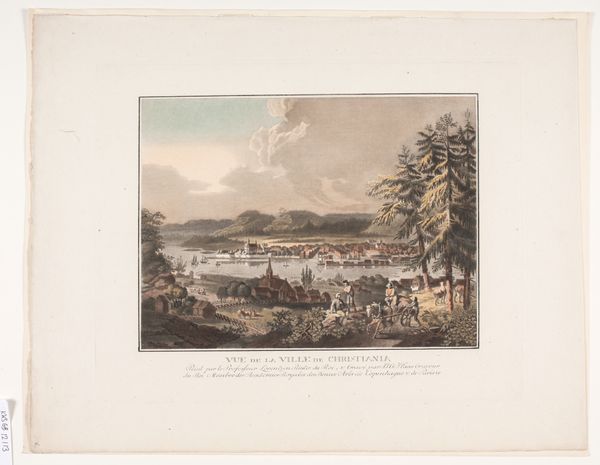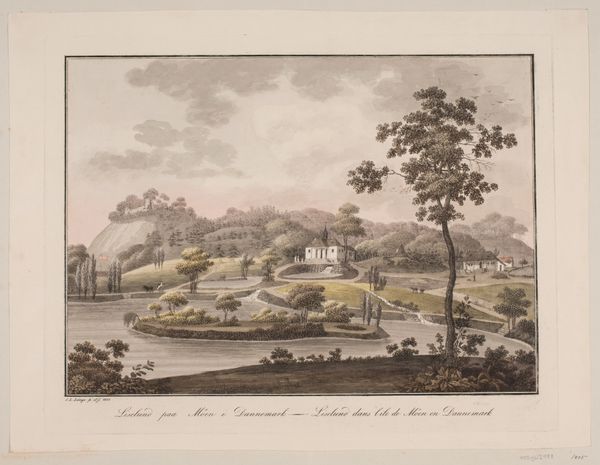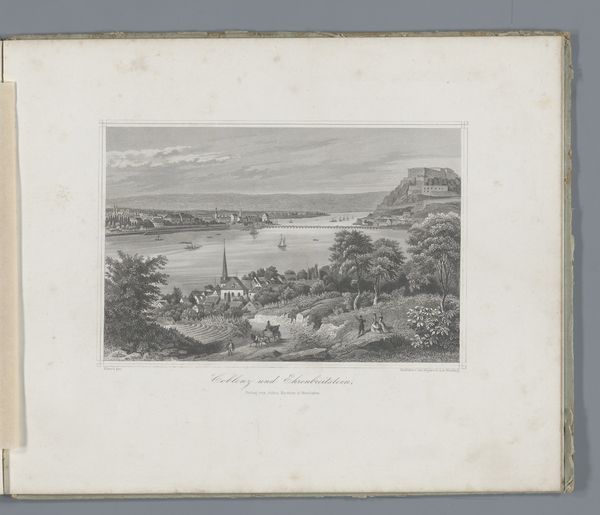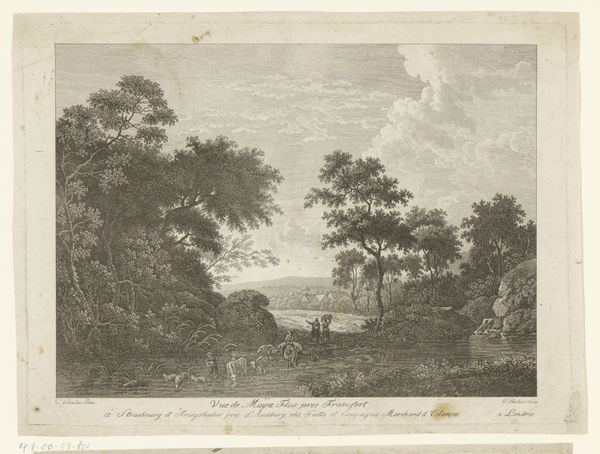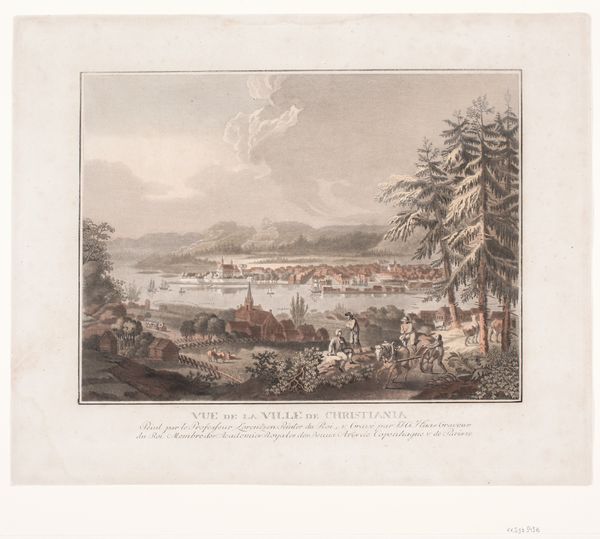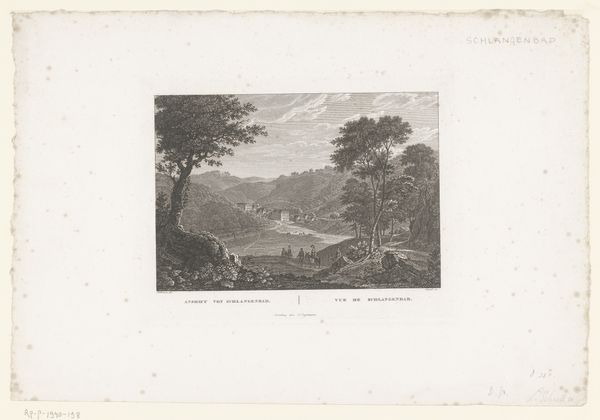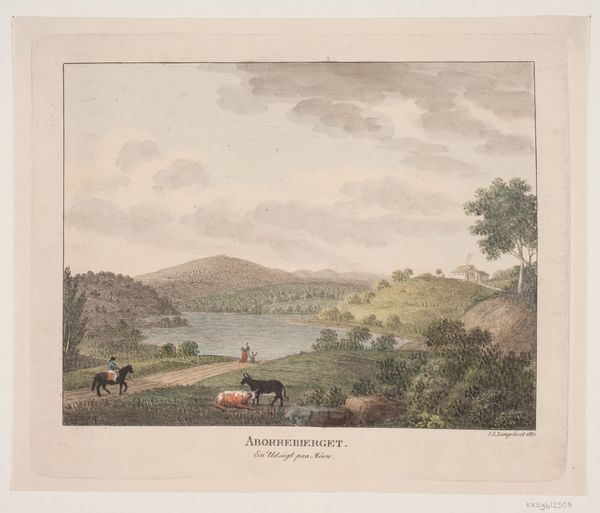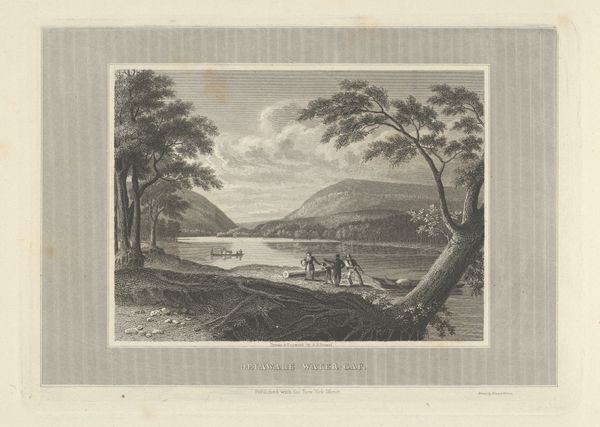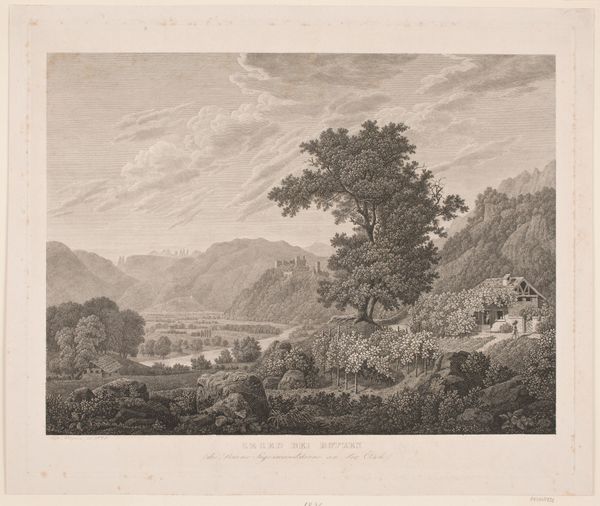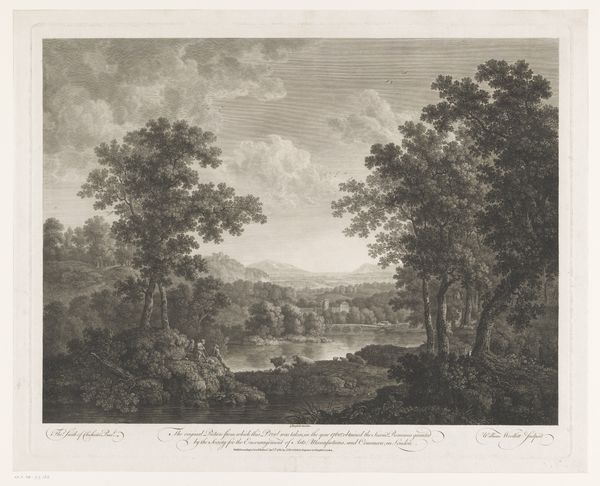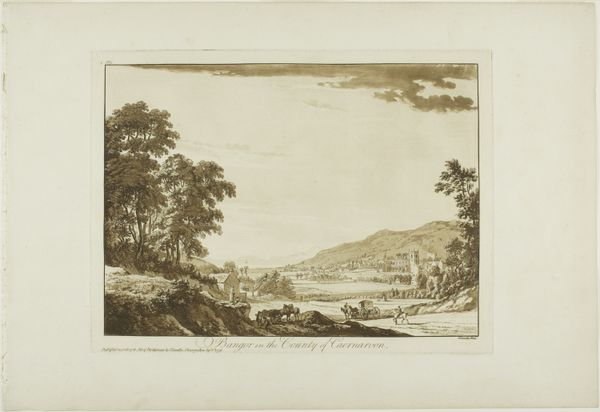
aquatint, print
#
aquatint
#
neoclacissism
# print
#
landscape
Dimensions: 405 mm (height) x 508 mm (width) (plademaal)
Curator: Before us, we have Georg Haas’ “Vue prise près de Hèningslöst,” an aquatint print created sometime between 1788 and 1792. Editor: My first impression? Tranquility. There's this soft light, these feathery trees, and distant hills... it almost feels like a daydream. A beautiful scene from so long ago! Curator: Indeed. Haas' command of aquatint allowed him to capture subtle gradations of tone, emulating the effect of a wash drawing. The neoclassical interest is apparent here, but with an interest in observable nature. Note how the formal organization, the framing of trees on the edges and their repetition, provide a compositional rhyme to the scenery. The artist is not so much making an illusionistic reproduction of what the site looks like, but trying to find out what that site _means._ Editor: And what do you think it means? To me, it speaks of a time of privilege and leisurely pursuits. You see the small figures dotted along the lower half of the composition, probably enjoying a picnic near the manor depicted slightly further off. But it’s also idyllic because of the artifice—this looks less like raw, unkempt nature and more like a well-composed set. Curator: Perhaps you are right, but in this moment of pictorial space that's presented before us we observe a mediation, maybe an equation that allows us to find truth through visual balance and controlled chaos, not to mention an idealizing lens that allows one to explore our natural desire and place within space and society. Editor: Yes, and there’s an element of that classical "control" that pervades it, right down to the muted tones that soften all the harshness from it. Do you get a sense that everything is perfectly where it ought to be, a vision filtered for aesthetic consumption? Curator: Precisely. Consider how each component, each formal element, reinforces the overarching theme of serene harmony that is reflected by the location in question. We arrive at a deeper interpretation. Editor: And, by appreciating that artifice, the constructed view that Haas creates for us here, we acknowledge something true, or what was aspired to be true about society at that time. Thanks, I now appreciate the layers Haas had brought to this wonderful scenery.
Comments
No comments
Be the first to comment and join the conversation on the ultimate creative platform.
